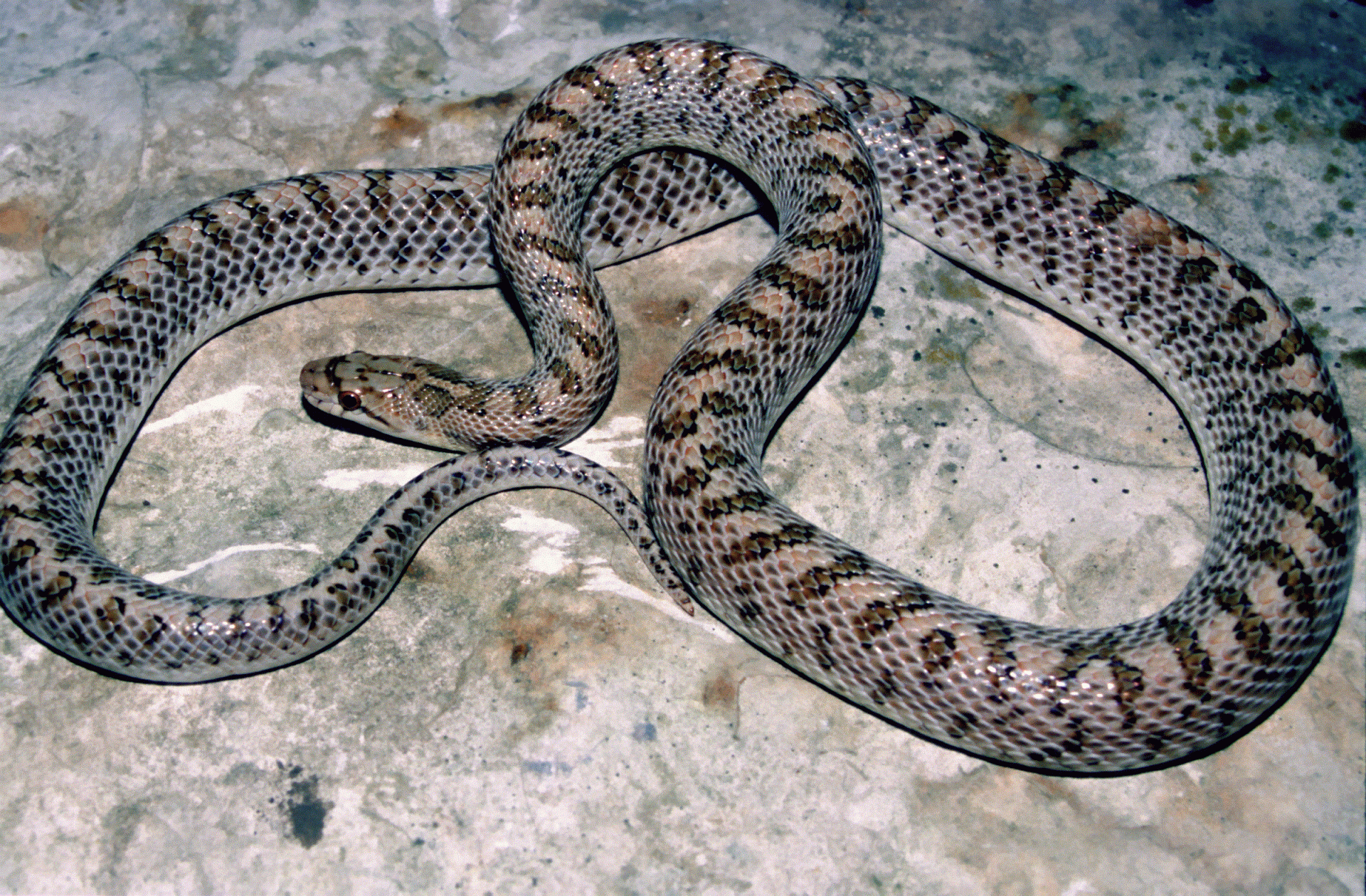

Most species like the california king snake have a bold coloration that can help break up their outline in the brush. Some like the scarlet kingsnake use Batesian mimicry to copy the appearance of the venomous coral snake. They frequently have bold colors that can include solid black, black and white striped, black and yellow, brown, and red. Kingsnakes are described as sharing a spoon-shaped head. The exact color and pattern will depend on the species. They can be gray, black, red, brown, yellow, or even black and white. Most rat snakes share a wedge-shaped head. Since rat snakes are such a wide group, it is hard to say a general appearance. The amount is not enough to cause harm to humans. Since colubrids like rat snakes do not have specialized fangs, they need to chew on prey to inject any toxins. While the New World species like the corn snake are considered to be non-venomous, some of the Old World species have been proven to have venom. This is not necessarily true for rat snakes. Venom Rat SnakeĪll kingsnake species are currently considered to be non-venomous. Remember, constriction is primarily used to cut off blood flow rather than suffocate prey. This means that a constrictor needs to be stronger to cut off blood flow and starve its brain of oxygen. Reptiles can withstand periods of lower oxygen availability.

This is theorized to be because they eat reptiles. Kingsnakes are notably stronger constrictors than a typical rat snake. This means that constricted prey is easier to kill by cutting off blood flow. Rat snakes typically prey on animals that need high levels of oxygen. Strength King snakeīoth rat snakes and kingsnakes are constrictors. This refers to the shiny and well-defined scales. The name of the genus, Lampropeltis, means “shiny shields” in Greek. This is partly what caused them to be grouped. Rat snakes as a whole have keeled scales. Scales Gonyosoma oxycephalum ( Arboreal Rat Snake)
#Milksnake keeled series
A kingsnake that has eaten a large snake will have a series of lumps going down its body. This lets them eat snakes that are the same length or longer. Kingsnakes have a unique method of curving the spine of snakes they eat. They will also practice cannibalism outside of the breeding season. Kingsnakes are known for eating snakes like black racers, corn snakes, rat snakes, and even rattlesnakes. The king in their name refers to this habit of eating other snakes. The big difference is that kingsnakes will eat other snakes. They are generalists and will eat nearly anything available. Kingsnakes have a similar diet in the wild. Some will also eat eggs from various species. Some species will also prey on birds or amphibians. They eat the rodents that come to eat grain or shelter in human buildings. Many species are found near human settlements. Rat snakes are named for their preference for rodents. This article will go over some differences in general since many species can carry either common name. They were once all considered to be the same but a DNA analysis in 2002 placed clarified the relations of the various genera called rat snakes. The New World rat snakes are more closely related to kingsnakes than they are to the Old World rat snakes. Kingsnakes (genus Lampropeltis) share their habitat with rat snakes in much of the United States.


 0 kommentar(er)
0 kommentar(er)
